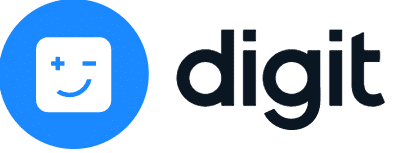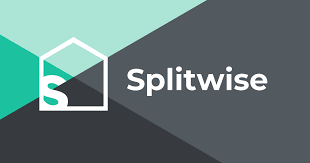Managing your budget as a college student is tough. You may be dealing with money on your own for the first time. Plus, you’re trying to balance all the expenses of going to school: paying for textbooks, supplies, meal plans, and transportation — potentially with a limited cash flow.
But learning the art of stretching a dollar is well worth it. Budgeting can help you reduce student loan debt. And the earlier you make a habit of saving, investing, and paying your bills on time, the better you set yourself up for the future.
Fortunately, you don’t have to resort to using a pencil and ledger like I had to in my college days. Today, there are plenty of digital apps to help you make a budget.
The Best Budgeting Apps for College Students
There are a ton of budgeting apps out there. Our article covers only the top apps most useful for college students.

Motley Fool Stock Advisor recommendations have an average return of 618%. For $79 (or just $1.52 per week), join more than 1 million members and don’t miss their upcoming stock picks. 30 day money-back guarantee. Sign Up Now
Our pick for best overall budgeting app for college students, Digit, is packed with features that put bill-paying, saving, and investing on auto-pilot. That makes it a great pick for those new to budgeting or who want a hands-off approach.
The other apps on this list all shine on one or two key points, such as beginner-friendliness or automated savings features.
For even more ways to help your wallet during your college years, see our article on the best money-saving apps for college students.
Best Overall: Digit
Digit packs a ton of features into its app, making it a nearly all-in-one budgeting tool. And its hands-off budgeting features automatically analyze your income and expenses to determine safe amounts to spend, save, and invest.
This means you don’t have to make daily manual entries or figure out numbers on your own. Thus, it’s an ideal app for those new to managing their personal finances.
Use it to:
- Always know exactly how much you have left to spend after accounting for bills and savings and investment goals
- Passively meet savings goals with automatic micro-savings that are regularly deducted from your linked checking account
- Budget for and autopay bills from a linked and dedicated account
- Chip away at big bills all month instead of dealing with them all at once
- Get a debit card that gives you access to only your “safe to spend” amount so you don’t accidentally spend money needed for paying bills
- Invest in exchange-traded funds (ETFs) based on your risk level and what the app determines is a good amount for you to invest according to your budget — or manually alter the predetermined amounts
Digit is reasonably priced and has multiple subscription options:
- Pay $9.99 per month to access all Digit’s features
- Pay $5 per month for savings features only
- Save 20% by paying annually
Best for Learning How to Budget: Goodbudget

Goodbudget is essentially the digital version of the envelope method for budgeting. That’s where you label envelopes with different spending categories, such as “groceries” or “entertainment. You then fill them with a set amount of cash to spend on each.
Once an envelope is empty, that’s it. No more spending in that category until your next paycheck and no dipping into other categories. For example, you can’t spend your grocery money to buy movie tickets.
Instead of real envelopes, Goodbudget uses digital ones. Otherwise, it works exactly the same as the physical envelope method.
Additional features:
- If you overspend, the envelope turns red to indicate you went over budget
- Unlike most budgeting apps, it doesn’t link to your bank accounts; you have to manually input income and expenses, which is good for the security conscious or those who want the freedom to occasionally spend outside their budget
- Get 20 envelopes for free
- Get unlimited envelopes for $7 per month or $60 per year
Best for Keeping Track of Student Loans: Mint
Mint is a free app that lets you track multiple accounts in one convenient place, including student loans. Though you may not be making payments while in school, Mint gives you a solid picture of where your debt currently stands and how it will impact your budget post-graduation.
Since Mint links to all your financial accounts, it gives you a constant birds-eye view of the rest of your finances as well. Just connect all your checking, savings, credit card, investment, and loan accounts to maintain a comprehensive view of your balances at all times. You can see your balances in the Mint dashboard.
Additional features:
- Create a custom budget to start tracking spending and saving
- Get personalized insights to help you save more and pay down debt
- Track bills and get notifications of when they’re due and if costs and fees have increased
- Get free access to your credit score and daily credit monitoring paired with advice on how to improve your score
Best for Long-Term Budget Forecasting: Dollarbird
Dollarbird operates a little differently from other budgeting apps. Rather than automatically tracking your income and expenses, it requires you to manually input them into a calendar. The idea is to help you evaluate your spending on a daily, weekly, or monthly basis.
By giving you a way to keep track of upcoming expenses far into the future, you’ll always know what’s safe to spend.
This system works well if you aren’t getting biweekly paychecks to replenish your bank account. The calendar view makes it easier to see what’s needed to make your grants and student loans last through the whole semester.
Additional features:
- No bank account links — all data is manually entered
- Sort expenses into auto-created categories or manually create your own budget categories
- Predict future balances by tapping on future dates for any month of the year
- Get one calendar for free by downloading the app from Google Play or the Apple App Store
- Upgrade to the Pro plan and get 20 calendars for up to three family members — pay $4.99 per month or $39.99 per year
Best for Controlling Spending: PocketGuard
PocketGuard is geared toward overspenders. Even if that’s not you, you’ve probably felt the need to tighten your budget as a college student with limited income.
PocketGuard connects to your checking, savings, and credit card accounts. It uses an algorithm to calculate how much money you actually have available to spend after accounting for your income and expenses. That ensures you always have enough set aside to cover your bills.
Additional features:
- The Autosave feature lets you set savings goals and have money automatically transferred from a linked bank account to a separate, FDIC-insured account that doesn’t earn interest
- Helps you negotiate better rates for things like cable and cell phone bills
- Analyzes your spending habits to identify areas where you can save money
- Lets you set reminders for upcoming bills
- Get a basic version for free
- Upgrade to the Plus plan to get a debt payoff plan, unlimited category budgets, and unlimited savings goals — pay $7.99 per month, $79.99 per year, or a one-time fee of $99.99 for lifetime access
Best for Building Savings: Qapital
Like all of the apps on this list, Qapital helps you make a budget and track your spending. Where the app stands out is in its ability to help you build savings. That’s a tough thing to do when you’re living on a tight budget.
Qapital builds your savings by rounding up every transaction you make with your linked accounts to the nearest $2 and funnels the micro-savings into an FDIC-insured account.
It offers three reasonably priced subscription plans:
- Basic. For $3 per month, Basic lets you set unlimited savings goals, create customized rules to trigger automatic savings, and easily transfer money between goals. You also get an FDIC-insured account to hold your savings.
- Complete. For $6 per month, Complete adds the ability to automatically pay yourself first and sort your paycheck into budget categories with Paycheck Divvy. It also gives you a Visa debit card, investment capability, and the ability to track weekly cash spending with Spending Sweet Spot.
- Premier. For $9 per month, Premier adds gamified money management through Money Missions, access to exclusive webinars, and the opportunity to get the first look at new content.
Additional features:
- Set up custom Rules for your micro-savings, such as rounding up purchases to the nearest $3 or triggering automatic savings every time you buy a latte
- Use your savings to grow a goal-based ETF investment portfolio
- Simulate spending scenarios and their future trade-offs so that you stay motivated to save
Best for Managing Your Budget Abroad: Wally
Wally gives you a visual overview of your spending with a graphic pie chart. This makes it easy to keep tabs on your budget at a glance — an ideal capability for visual learners.
Where Wally really stands out as a useful tool for college students is with its built-in support for virtually all foreign currencies. Plus, Wally syncs with over 15,000 banks in 70 countries.
So if you’re studying abroad for a semester — or even pursuing a degree from a foreign university — you can continue to manage your budget, track, foreign transactions, and convert your money into the correct currency.
Additional features:
- Switch between a visual overview or calendar view of your budget
- Use the joint banking option to manage a group budget — perfect for roommates sharing rent and other expenses
- Sync with your bank accounts to get insights on your cash flow and spending habits
- Scan and upload bills, receipts, and warranties for easy reference
- Get the basic version free
- Upgrade to the Gold version for $8.99 per month, $39.99 per year, or a one-time fee of $74.99 for lifetime access
Best for Students with Roomates: Splitwise
If you share living expenses with roommates, Splitwise lets you track shared expenses to ensure everyone pays their fair share.
The group feature allows everyone to organize their joint expenses and keeps tabs on who owes what. You can also record payments to see when your roommates have paid their share.
Additional features:
- Organize expenses into budget categories
- Make payments through PayPal or Venmo
- Get the basic version for free
- Upgrade to Pro for $3 per month and add receipt scanning, charts and graphs, and currency conversion
Best for Those Who Hate Budgeting: Cleo
Most budgeting apps try to make budgeting as painless as possible. Cleo takes it a step further and makes budgeting fun.
It does this by using hefty doses of irreverent humor and lots of style geared toward the young. This is not your mom or dad’s budgeting app.
Plus, Cleo doesn’t merely give you a list of numbers and leave you to figure things out on your own. It delivers financial advice in simple, easy-to-digest spending updates, hypes, and roasts. These words of encouragement or caution help first-time budgeters stay motivated and on track.
Additional features:
- Set monthly budget targets based on your spending
- Automatically save with roundups and other savings hacks like a swear jar, which triggers roasts when you spend over your budget goals
- Get cash back on everyday purchases
- Build credit with a secured credit card, the Cleo Credit Builder Visa card
- Get the basic plan for free
- Upgrade to the Cleo Builder level for $9.99 per month — a 33% discount for students — and get the secured card, cash advances up to $100, and credit score coaching
Methodology: How We Select the Best Budgeting Apps for College Students
We use several key metrics to evaluate budgeting apps and choose the best for our readers. Each relates in some way to the apps’ overall savings capability, usefulness, and relevance to college students.
Cost
Budgeting apps should help you save and manage your money, not cost you money. Moreover, you probably don’t have much cash to spend while you’re enrolled in school, which is why it’s so important to learn how to budget in the first place.
Unfortunately, very few budgeting apps are free. But we try to stick with the lowest cost apps balanced against the most useful features. Any pricier apps on our list are rich in features.
Ease of Use
Granted, not every college student is in their late teens or early 20s. But most are members of Generation Z, which means they grew up knowing how to navigate a smartphone app.
What today’s students may be less familiar with is how to make and manage a budget. Thus, the best budgeting apps for college students are intuitive and beginner-friendly.
Financial Education
The best budgeting apps for college students do more than track spending. They also help teach financial literacy to those new to managing their own money. This helps instill the necessary skills to build lifelong money management habits like saving, investing, and reducing or avoiding debt.
Thus, most of the apps on our list include features that give personalized insights or advice, provide teaching tools, or include a library of financial resources and information.
Features
More comprehensive and useful apps rank better in our methodology, especially as we compare them against the cost of the app.
In other words, a good budgeting app for college students should be as all-inclusive as possible. It shouldn’t ask you to cobble together several apps — and pay several subscription fees — to manage your budgeting, saving, and investing.
Wherever apps are more limited in scope, they must shine on doing one or two things really well, and it must be a feature that’s particularly relevant to college students.
Budgeting Apps for College Students FAQs (Frequently Asked Questions)
If you still have questions about budgeting apps for college students, we have answers.
How Do Budgeting Apps Work?
Depending on which account types your app can track, you might securely link your bank accounts, credit cards, investment accounts, or loan accounts with the app. After the app connects to your accounts, it automatically tracks your spending. Some apps also track your income and expenses (bills).
Less typically, some apps require you to manually enter your information. These types of apps do not connect with any of your accounts, so there’s no automatic tracking.
Apps with automatic budgeting features track your income, expenses, and spending over a period of time. They then use that information to create a budget that’s customized to you.
These budgets tell you how much money you have left over to spend after accounting for your income and expenses. They can help you decide how much to save toward your goals each week, month, or pay period.
Other apps help you see everything about your finances in one place. From there, you can decide on your own how much you should save, invest, or spend after you account for your income and expenses.
Why Should I Use a Budgeting App?
Budgeting apps help you do what any good budget does: manage your money. They help you avoid financial pitfalls like overspending or taking on too much debt. They help you plan for the future, especially if you have specific savings goals like a vacation or new car.
Using an app can be even better than using an old-fashioned tool like a spreadsheet. Many digital budgeting apps come with added features like savings hacks that let you micro-save on autopilot or investment options that let you deposit those micro-savings into an investment fund.
They can also be excellent teaching tools since many apps give you regular, customized insights into your budget. They can help you tailor your money management to fit your goals, rather than leaving you to figure it all out on your own.
Plus, since the apps operate on your smartphone, you get the bonus of having your budgeting tool with you at all times. So you’ll always know how much money is safe to spend, sparing you from going over your budget. That way, you avoid a future personal financial crisis — say, by accidently spending money earmarked for your car payment on a cute pair of shoes.
Are Budgeting Apps Secure?
Most budgeting apps connect to your bank accounts, credit cards, and investment accounts. Some even let you directly manage your money through the app. So it’s natural to ask if budgeting apps are secure.
Fortunately, budgeting apps are designed to protect your financial information using the same types of data security as major banks.
These measures include:
- Storing your login information in separate databases protected with multilayered hardware and software encryption
- Encrypting any data transmitted through the app
- Requiring you to use multi-factor authentication, PIN codes, Touch ID, or Face ID to access your accounts
How to Choose the Best Budgeting App for College Students
Choosing the best budgeting app for you depends on your unique comfort level, preferences, learning style, and tastes.
For example, if you prefer a hand-off approach or an app that will figure out all the numbers for you, opt for an app that automatically budgets. But if you want more control, go for an app that requires manual tracking.
If you’re a more visual person, choose an app with lots of bright graphics like pie or bar charts rather than lists of accounts and numbers.
And, if you want to do more with your budgeting app than just budget, look for an app that lets you set aside micro-savings or invest.
In the end, your choice of budgeting app comes down to personal preference. Your best budgeting app may be the one that resonates most with your sense of personal style or branding — in other words, the one that feels most like you.







